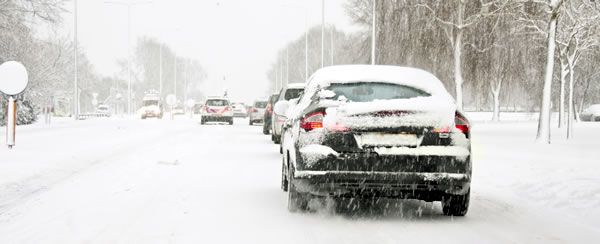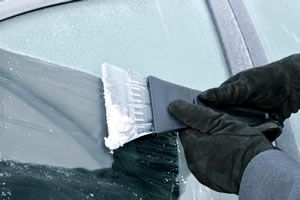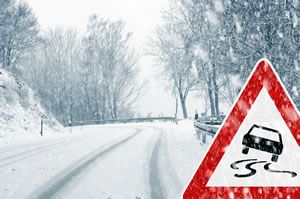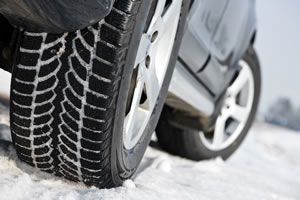Winter Driving Tips
31 Jul 2008

All drivers should take extra care on winter roads, but new drivers, in particular, are twice as likely to have an accident in poor weather conditions than other road users. Follow our guide to ensure you prepare your car properly and drive safely this winter.
How to prepare your car for winter
Just by making a few regular checks of your car, you can decrease the chances of breaking down and ensure your car is in tiptop condition for the winter season.
- If heavy snow is forecast, make sure you carry a spade, some sacking, wellies and a torch with spare batteries in case you get stuck. If you have to make a long journey, especially at night, take a flask of hot drink, rugs and blankets and high-energy food such as chocolate.
- A car that is well maintained is the most economical on fuel. Get it serviced at the manufacturer’s recommended intervals. Before a long journey and if you use the car for short journeys every day, carry out the following checks at least once a month.
- Remove the engine dipstick and check the oil level; wipe the stick with a clean rag, replace it and check again. The level should fall between the minimum and maximum marks and if necessary, remove the oil-filler cap and top up.
 Check the engine coolant level in the radiator or expansion tank attached and top up if necessary, but only when the engine is cold. Top up the windscreen washer reservoir with antifreeze mixture in the correct proportions, which will be noted in the manufacturer’s handbook.
Check the engine coolant level in the radiator or expansion tank attached and top up if necessary, but only when the engine is cold. Top up the windscreen washer reservoir with antifreeze mixture in the correct proportions, which will be noted in the manufacturer’s handbook.- Use a pressure gauge to check that the air pressure in all tyres, including the spare, is as recommended in the handbook but only do this when the tyres are cold in order to get an accurate reading.
- Use a tyre-tread tool to measure the depth of the tread on all tyres, as the law requires that the depth all around the tyre and across its central section should not be less than 1.6mm. Most modern tyres have wear bars, which stand proud of the bottom of the tread grooves. If they are flush, the tyre must be changed. Remove stones and other debris from the tread with a penknife.
- Check that all lights and indicators are working and clean. Replace any spent bulbs and ensure that the battery terminals are clean and secure.
- Keep the windscreen, mirrors and windows clean and keep the windscreen and rear screen washer reservoirs topped up. In cold, misty or foggy weather check that the windscreen demister works.
- Additional checks include: replacing worn rubbers on windscreen wipers, ensuring number plates are clean and firmly attached, adjust seat belts correctly and check the alternator belt for wear and ensure that the tension is correct.
- A simple collection of tools and equipment will help you deal with many emergencies and can be stowed in the boot. This can include: first aid kit, warning triangle, jack, foot pump, paper roll, engine oil, water, spare fuses and bulbs and a penknife.
How to adapt your driving for winter conditions
 So your car is ready for winter – now for some driving tips to make sure the winter conditions don’t catch you out.
So your car is ready for winter – now for some driving tips to make sure the winter conditions don’t catch you out.
- First of all, decide if your journey is really necessary and only go out if it is completely unavoidable. Check the latest weather and traffic reports before leaving.
- In windy conditions, keep a firm grip on the steering wheel to avoid being pulled out of your lane, especially on exposed stretches of road. Watch out for cyclists or motorcyclists who may be blown into your path and allow them extra room when overtaking.
- Slow down if the road ahead is flooded and stop if you are uncertain of the water’s depth. If the water appears shallow, drive through slowly and to avoid stalling, hold down both the accelerator and clutch pedals about halfway and keep in first or second gear. Afterwards, test the brakes several times to ensure they are pulling evenly on all wheels.
- In fog, drive with dipped headlights but don’t use full beam as the light will be reflected from the fog particles and can be dazzling. Switch on rear fog lamps when visibility is less than about 90 metres but remember to switch them off when the fog clears, as it is then an offence to use them.
- Keep well behind the vehicle in front and drive slowly enough to stop within the distance clear ahead, taking into account that roads are more slippery in fog than in rain. Be prepared for patches of thicker fog, where visibility deteriorates suddenly and avoid overtaking. If you have to pass another vehicle, flash your headlights and sound your horn to warn the driver, but not between 11.30pm and 7am in a built-up area.
 On ice, braking distances can be ten times longer than in normal conditions so keep your speed down and leave plenty of space from the car in front. Drive in a high gear, no lower than third to reduce the chances of wheelspin. Use ‘cadence braking’, which is braking with a pumping action to avoid the wheels locking and the flashing brake lights will also warn drivers behind.
On ice, braking distances can be ten times longer than in normal conditions so keep your speed down and leave plenty of space from the car in front. Drive in a high gear, no lower than third to reduce the chances of wheelspin. Use ‘cadence braking’, which is braking with a pumping action to avoid the wheels locking and the flashing brake lights will also warn drivers behind.- In snow, use dipped headlights and stop regularly to clear windows and lights. Take extra care on hard-packed snow or ice hidden beneath fresh snow. If the car gets stuck, don’t accelerate hard as this merely compacts the snow into the tyre treads, reducing grip. To get out, put sacking, twigs, sand or grit immediately in front of the driving wheels, make sure the front wheels are straight, select second gear and accelerate gently while letting the clutch out slowly to avoid wheel spin.
- At night, on unlit roads, use full-beam headlights but dip them for oncoming traffic. Watch your speed, you are driving too fast if you could not stop safely within the range of your headlights. Don’t get too close to the vehicle in front, as your headlight beam should fall short of its rear. Avoid using interior lights in the car as they reflect against the windscreen and reduce the clarity of your view.
- In wet weather, slow down, as braking takes longer on a wet road. If your car aquaplanes – slides on water not channelled away by the tyres – don’t brake or steer sharply but ease pressure on the accelerator until the tyres regain grip. On motorways in driving rain, avoid overtaking heavy goods vehicles as their spray can completely obscure your vision.
- To control a skid, don’t press the brake pedal or the accelerator. For a slight slide, turn the steering in the direction of the skid and ease off the accelerator until tyre grip is regained. If the skid is more violent, take your feet right off the pedals and steer sharply in the direction of the skid. If the rear of the car swings left, steer to the left to bring the front and rear wheels into line.

